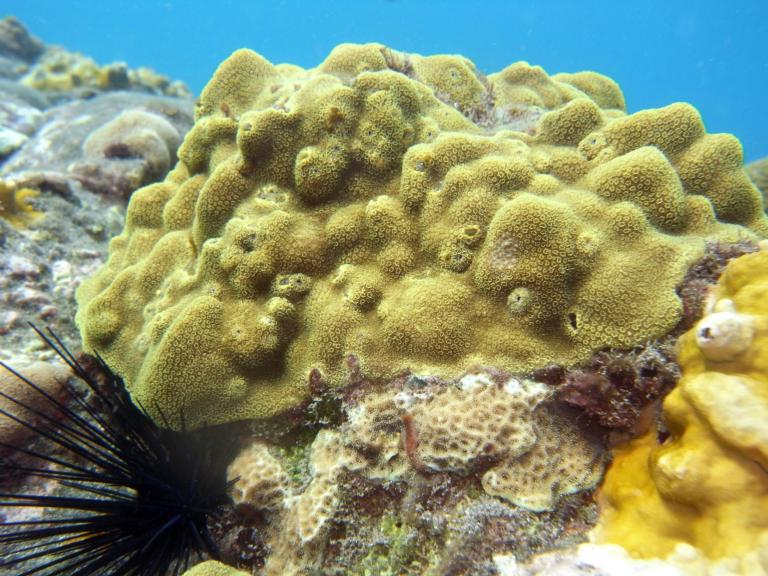
Manmade structures such as seawalls, breakwaters, and jetties are increasing in frequency in marine coastal environments. Overtime, these structures are unintentionally recruiting marine life such as corals, resulting in the formation of artificial reefs. A recent study in the Caribbean, has revealed how the biodiversity on these artificial structures compares to natural reefs.
Corals under threat
Besides looking visually aesthetic, coral reefs play above all a central role in the ocean. Coral reefs support over 800,000 marine species and supply numerous ecosystem goods and services. Yet sadly, corals are threatened by a combination of global climate change and local human activities such as fishing, shipping and coastal development. Natural recovery is too slow, so active restoration efforts are crucial to prevent the loss of our coral reefs.
Shipwrecks and urban structures
One method of coral reef restoration is the construction of artificial reefs. Artificial reefs come in various forms. Some are designed and deployed specifically to enhance marine life. Others, such as shipwrecks and urban structures –including jetties, seawalls and breakwaters– recruit marine life unintentionally. With increasing coastal development, the frequency of urban structures in the marine environment is increasing, yet marine communities on urban structures receive less attention in scientific research.
Filling this gap, a team of researchers explored the biodiversity of urban structures at St. Eustatius, an island of the Caribbean Netherlands. Their findings are published in the scientific journal Marine Pollution Bulletin. The team consists of Claudia Hill from the University of Groningen and Myrsini Lymperaki from the University of Amsterdam, under the supervision of professor Bert Hoeksema, who is affiliated to Naturalis Biodiversity Center and the University of Groningen.
The islandof St. Eustatius
The island of St. Eustatius, popularly known as ‘Statia’, is located in the eastern Caribbean and is a special municipality of the Netherlands. The island is steeped in history, having changed hands between numerous European empires and having thrived as a port of trade in the 17th and 18th century. Today St. Eustatius is much quieter, though traces of the past like remnants of ancient piers and jetties remain in the coastal water. “These ancient structures shelter a new home for marine life”, tells Hill. “With corals and other benthos living on the remains, altogether forming an artificial reef”, she continues.
Artificial reef vs. Natural reef
The research team compared the biodiversity on the artificial reef to the biodiversity of a natural reef nearby. “We found a considerably higher biodiversity on the natural reef, with a wider range of species, a higher density of organisms, and different dominating species” explains Hill. “We concluded by the greatly differing communities on each reef that artificial reefs can not serve as surrogates for natural reefs.” The researchers highlight, however, that the main cause for biodiversity differences lies in the deviant structural features on the reefs. The natural reef exceeds the artificial reef in microhabitats like crevices and overhangs that are beneficial to the growth of marine life.
Artificial reefsin conservation work
“What I personally found most surprising, is despite the artificial reef being centuries old, the cover and abundance of reef organisms is still not comparable to that on the natural reef”, sas Hill. “But it is important to note, that whilst the artificial reef did not host an identical community to the natural reef, it still serves as a healthy and diverse reef in its own right”, she continues. Therefore, there is still a place for artificial reefs in conservation work, as they serve to enhance the marine life of the local area. “Artificial reefs provide a promising outlook for the future of coral reefs, yet a precautionary approach must be taken to prevent any unwanted consequences, such as the invasion of non-native species.”
Noteto editors
Curious about the further details of this research? Read the full publication in Marine Pollution Bulletin. Images are available here for usage under the reference Naturalis Biodiversity Center.
For more information about the study, please contact:
-Bert Hoeksema via bert.hoeksema@naturalis.nl, or +31 640 60 00 36 and/or;
-Claudia Hill at claudiahill163@gmail.com, +316 44412355